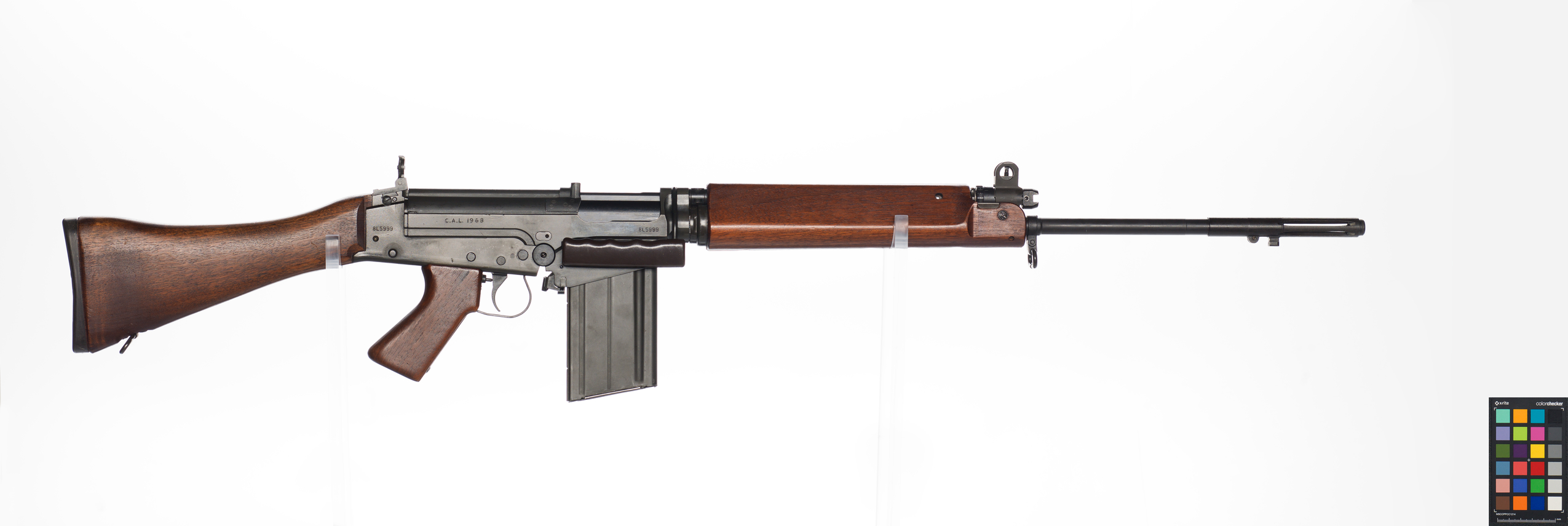The C1 submachine gun (SMG) is the Canadian-produced version of the British L2A1 Sterling SMG. It replaced the Sten gun. Production began in 1958–59 and it remained in service until 1985, when the C7 began to replace it. The SMG fires 9-mm ammunition from a 30-round curved magazine but also has a shorter 10-round magazine for use by vehicle crews.

Background
In the mid-1940s, Canada developed a submachine gun known as the XP54, which was intended to replace the Second World War-era Sten gun. The British evaluated this weapon in 1946 and 1948. Although they felt the weapon had promise, it experienced a number of failures during testing. All further trials were cancelled.
Instead, in November 1956, Canadian representatives asked to manufacture the British-designed Sterling submachine gun in Canada under licence. They also asked to make some modifications to the weapon. One of the biggest differences is the use of stamped metal parts instead of the more expensive castings used by the British. The Sterling was designated the C1 SMG in Canadian service.

Manufacture of the SMG began at the Small Arms Division, Canadian Arsenals Limited factory in Long Branch, a suburb of Toronto. Some 30,000 SMGs were produced there.
Design and Specifications
The C1 SMG is 65.58 cm long (48.26 cm with the buttstock folded underneath it) and weighs 3.62 kg with a fully loaded 30-round magazine. The SMG has an adjustable rear aperture sight with 100- and 200-yard (91.44 and 182.88 m) settings. A three-position change lever can be moved from S (safe) to R (repetition or semi-automatic) to A (automatic).
The weapon’s barrel is protected by a perforated sleeve. It provides heat dissipation when the weapon is fired and prevents the shooter’s forward hand from touching the hot barrel.
The SMG is fired through a blowback action using an open bolt. Like the Sten gun, magazines are inserted from the left of the firearm receiver.
The SMG has an adjustable clip-on web sling for carrying and can be fitted with a standard C1 rifle bayonet. A blank firing attachment can also be attached for use on training exercises. In addition, the SMG has a removable Arctic trigger guard for use with heavy mittens worn during winter warfare.
Employment
Canadian soldiers nicknamed the SMG the “smig.” Favoured for its compact nature, it was the primary weapon of armoured vehicle crews, infantry section commanders, signallers and military police, among others. During the nearly three decades it was in use, the SMG saw active service on several UN peacekeeping operations.
Around the mid-1980s, the C7 assault rifle started replacing the C1 as part of a larger small-arms replacement programme. A shorter version of the C7, called the C8, was also introduced for soldiers who needed a more compact weapon.


 Share on Facebook
Share on Facebook Share on X
Share on X Share by Email
Share by Email Share on Google Classroom
Share on Google Classroom


